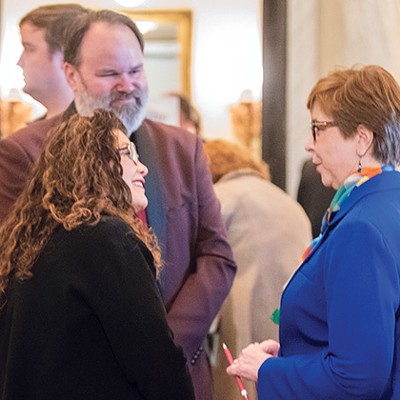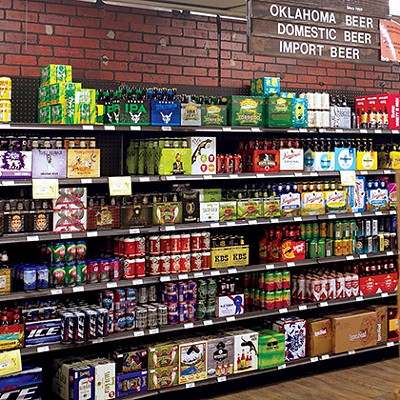If you think advertising is all a candidate's campaign piggy bank is used for, then you don't know anything about campaigning. Being seen on television is certainly important, but if money is short for bumper stickers or the cell phone bill, a candidate might as well drop out of the race.
Campaigning for governor is just like running a small business with employee payrolls, taxes, insurance and office supplies. Sifting through the expense reports of the main candidates for governor shows nothing is too expensive or too cheap, whether it's paying for a high-dollar Washington, D.C., consulting firm or buying ink for printers.
"Traveling the state of Oklahoma has been a full-time job for our campaign," said Louis Waller, campaign aide to Republican Randy Brogdon. "Normal expenses, such as food, gas, lodging and other typical traveling expenses, add up quicker than you might think."
Slapping down $5 for a Starbucks coffee may not seem like much on the campaign credit card. But do it multiple times in a month, and all of sudden you need a donation to cover the costs.
Looking at campaign expense reports from the main gubernatorial candidates, one may wonder why the state is still in a recession. From the last reports filed in mid-July, the four contenders spent more than $5 million so far. Factor in the hundreds of candidates for the numerous elected offices on the ballot, and the figures keep going up.
"It really is like running a business," said Denise Northrup, Mary Fallin's campaign manager. "And we have been running this for nearly two years now."
Democrat Drew Edmondson has spent the most. That's because he has raised the most money. His expenditures show a total of $1.688 million spent from more than $2.57 million raised. Republican Fallin comes next, spending $1.664 million out of $2.44 million raised.
Democrat Jari Askins follows, spending $1.544 million from $2.08 million raised. Republican Brogdon is far behind in both expenditures and contributions, having spent $311,877 out of $391,603.
The bulk of the funds are spent on payroll, contract consultants and television advertising.
At a Brogdon rally in Tulsa, Waller held up a bucket, pleading with the crowd of about 100 for donations.
"It cost $1,100 for a 30-second ad to run on television just one time," he yelled.
By the time the July 27 primary election rolled around, millions had been spent on TV ad buys. And the general election is still to come.
In one fell swoop, Askins spent a quarter of a million dollars to blitz the Tulsa airwaves with her face and message.
Campaigns also have to spend money to hire people to run the operation. Campaign managers for gubernatorial candidates make between $6,000 and $7,500 a month, according to some of the reports. Tack on salaries for accountants and public relations managers, and the candidate has to start making more fundraising phone calls.
But the money raised for salaries may fall behind the money spent for out-of-state consultants. All four leading gubernatorial contenders used at least one consultant or firm on the East Coast. That means big bucks.
Fallin has paid tens of thousands of dollars to top Republican pollster Ed Goeas in Alexandria, Va., while Askins gave $34,000 in one check to Peter D. Hart Research Associates in the nation's capital.
"We look to Washington, D.C., because they have the experience on these types of campaigns," Northrup said. "They have run races for presidential candidates. We choose to go with the best."
Another reason campaigns are more expensive is that there are many more ways to campaign today than 20 or even 10 years ago.
"Media consultants, Google ad buys, licensing websites and all types of technology equipment" are just of the few nuances candidates have to buy into, said Askins' campaign manager Sid Hudson.
Campaigns need more than just someone to run it. All major campaigns need a person who can do research, a person to do polling and a person to handle the media. While television, newspapers and radio were once the main forms of pubic relations, the Internet has cropped up to drain the treasury even further.
And then there are the unexpected expenses, like that flat fire or carpet cleaning rental when the campaign office floods. Unfortunately, those costs have to be reported as well.
Askins, for example, used $300 of her funds to rent a Snocone machine.
"The Snocone machine may be the difference maker," Hudson quipped. "That is actually old school."
It cost Fallin $200 to buy a few cookbooks from Ronnye Sharp in Fallin's hometown of Tecumseh, which was listed as a "grassroots expense."
"The author is Mary's piano teacher when she was (a) kid," Northrup said. "We always get asked for auction items, so purchased the cookbooks to place in an auction. That was probably our most random expense."
Scrolling through Edmondson's expenditures, one item did pop out: $17 for jumper cables.
"The jumper cables were purchased as a preventive measure," Edmondson's campaign manager Emily Lang said. "The car the campaign utilizes is a rental, and there were no jumper cables in it."
Brogdon paid $39.07 for Peppermint Puffs candy for "promoting campaign."
Putting the intangibles aside, the money needed for statewide office could keep several businesses afloat during economic hard times.
"The amount of money it takes to run a statewide campaign is staggering," Lang said. "TV ads are expensive, travel costs are expensive and the day-to-day running of a modern campaign are expensive. It may well be time for Oklahoma to look at what other states are doing regarding campaign financing and begin to make changes to our own process." --Scott Cooper











